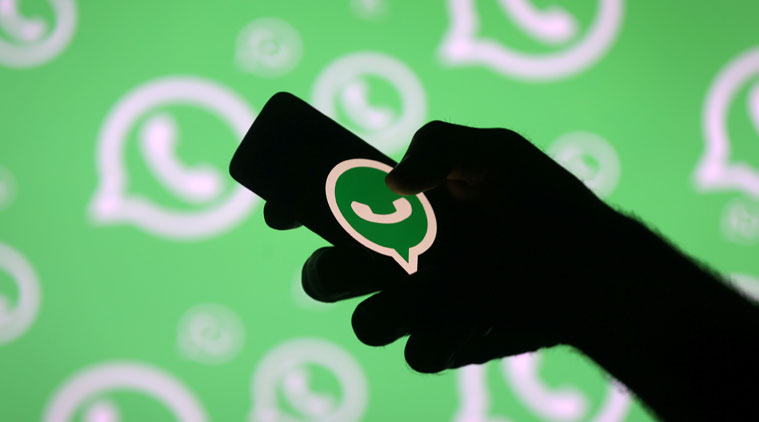A lynching in Digital South
The companies that have got us hooked must be on the hook for better solutions

The fervour of the lynch mobs was largely facilitated by social media, which efficiently delivered rumours to solidify a “common cause”. Among these, WhatsApp is the prime carrier, with over 200 million Indian users in a given month.
Harvard has once again emerged as a bit player in India’s political theatre. You remember the debate over the “Harvard vs hard work” schools of thought, with the Ivy-free Prime Minister vigorously championing the latter? This time around, Harvard’s return as a cause celebre is because India’s liberal elites have been reduced to a state of shock that the Harvard-educated Union minister, Jayant Sinha, would adopt the modus operandi of the more extreme hard-workers in his party. At issue are the pictures of him felicitating men convicted of lynching Alimuddin Ansari, who was moving meat in a van in the wrong place at the wrong time.
In the meantime, a petition to Harvard to lock Sinha out of the alumni clubhouse is gathering signatures. It is easy to fill newspaper columns obsessing about how the winding path leads from Harvard to Jharkhand. But let us not forget that a man was lynched in 21st century India. Worse, Alimuddin Ansari is not alone. Earlier in the month, a mob in Dhule district of Maharashtra lynched five people following rumours that they had abducted a child. Last month, three people were victims of vigilante justice in Tripura. Before that, a transgender woman was lynched in Hyderabad.
Lynching is a social act. It is not new, but it happens more readily when more people believe in some common cause and fewer people have the counter-facts to pose an objection. The fervour of the lynch mobs was largely facilitated by social media, which efficiently delivered rumours to solidify a “common cause”. Among these, WhatsApp is the prime carrier, with over 200 million Indian users in a given month. WhatsApp, of course, is an important part of the largest digital media enterprise on earth: Facebook. It has captured the attention of Indian users like no other app, has become an addictive and efficient spreader of forwarded “good morning” cheer, Santa-Banta jokes, pictures of newborn grandchildren — and, without question, venomous rumours that can whip up a digitally orchestrated frenzy.
Instead of wasting precious resources writing to Harvard to banish Sinha, how about expending some of that energy in writing to the Harvard dropout, Mark Zuckerberg. Shouldn’t he and his band of geniuses figure out smarter ways to ensure that their product doesn’t become Exhibit A for the anti-social consequences of social media?
Of course, one could argue that this is a local problem and calls for local solutions. Indeed, there are some attempts beyond the ham-handed approaches of local officials and police. The itinerant town crier has been re-tooled for the digital age, for example, but in the Indian context even this solution has its perils. One such “rumour buster”, Sukanta Chakraborty, was paid to travel from village to village in a van equipped with a loudspeaker, warning of the dangers of fake news. He was rewarded not with smiley emojis, but by an angry mob wielding bricks and bamboo sticks.
At the other end of the spectrum, India’s digirati have sprung into action and have set up some more high-tech solutions. Kudos to mythbusting sites. Altnews.in debunked a video purporting to show a Hindu girl being attacked by a Muslim mob, and revealed it to be a two year-old clip from Guatemala. SM Hoax Slayer revealed that a viral WhatsApp forward of the Indian flag flying atop the Israeli Parliament was fake. Check4Spam.com invalidated digital rumours of 200 child kidnappers having arrived in Bangalore.
But a more systemic approach is needed. We need to get Facebook/WhatsApp’s clever coders to figure out ways to tame their product’s wildest uses. For a start, I would recommend they take a field trip out of the sun and sushi filled offices in Silicon Valley and take a ride in the hapless rumour buster’s van to get a visceral feel for the context in which their product is consumed.
Yes, I know, Facebook has tried to fix things. The PR team has placed public service advertisements: “Together we can fight false information” and the 10 “easy tips” that tip you off that not all that comes over WhatsApp is true. But, seriously? Does the company that has mastered the science of “persuasive design” truly believe that a mob en route to a lynching will pick up its copy of the Dainik Jagran or even of The Indian Express and run through the 10 easy tips test and put down its bricks and bamboo sticks? And do we expect that a subtle reminder on a WhatsApp message that it has been forwarded — the best high-tech solution that has been dreamt up thus far — will induce the mob to put the lynching aside?
I do believe that Facebook can do more than 10 easy tips and a “forward” warning. The company wrote the book on digital triggers that influence behaviours, to mess with our dopamine levels and keep us addicted to the screen, with clever devices such as the Like button, push notifications, little signals that tell you whether someone is typing a message to you or has read your message, infinite scrolling. Why have all those geniuses now taken a long leave when we need them to devise triggers to stop people from going out and lynching other people? Would the revered Fogg Behaviour Model from the Stanford Design Lab, at the heart of so many of these tweaks, recommend 10 easy tips and a “forward” note on every viral WhatsApp message as the optimal solution?
So, forget Harvard. Write to those who run or influence the largest digital platforms. Tell them to stop focusing only on the problems of the Digital North; their products are growing much faster in the Digital South and will be used more energetically and more frequently here. Tell them the names of Alimuddin Ansari or Dadarao Bhosale or Nilotpal Das — or of an Adivasi tribal who simply went by the name, Madhu — and how their lives ended with a digitally-orchestrated lynching.
Like the producers of fast cars or sugary beverages or artery-clogging cheeseburgers, creators of products must figure out innovative ways to make their products less deadly. It is time WhatsApp and Facebook are asked to meet the same standards. It does not require a Harvard education to figure out how pernicious digital media can be when used by those who have barely had access to media of any kind. It does take hard work to understand how users can be manipulated and to come up with the solutions. The companies that have got us hooked must be on the hook for better solutions.
There is no such thing as a free lynch. Please forward this message on WhatsApp.
The writer is Dean of Global Business at The Fletcher School at Tufts University, founding executive director of Fletcher’s Institute for Business in the Global Context. He is author of The Slow Pace of Fast Change
For all the latest Opinion News, download Indian Express App
More From Bhaskar Chakravorti
- Growth in the machineIf done right, artificial intelligence can jump-start India’s productivity, help the country get out of the emerging economy trap, propel it into the ranks of…
- One misstep too manyFacebook has egg on its face again and this time it might stick..
- Three un-Davos menThe culture of contradiction infused the speeches of Modi, Trump and Xi at the World Economic Forum...







































No hay comentarios:
Publicar un comentario